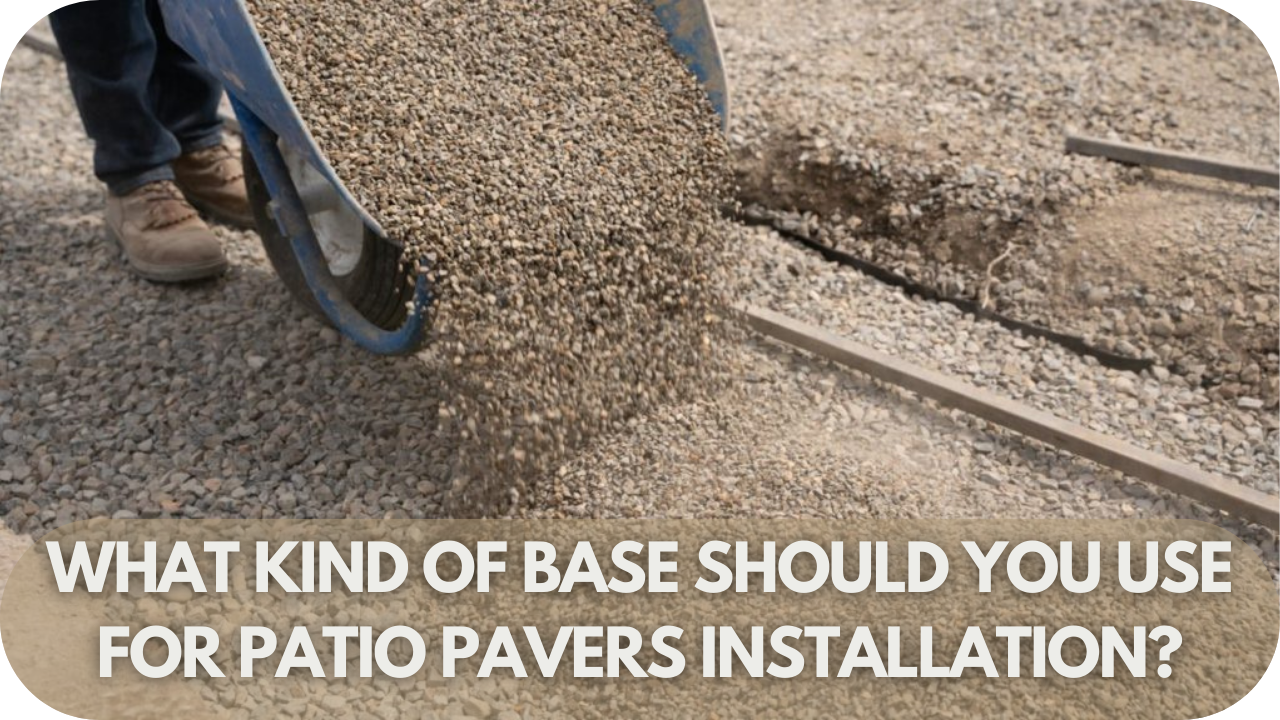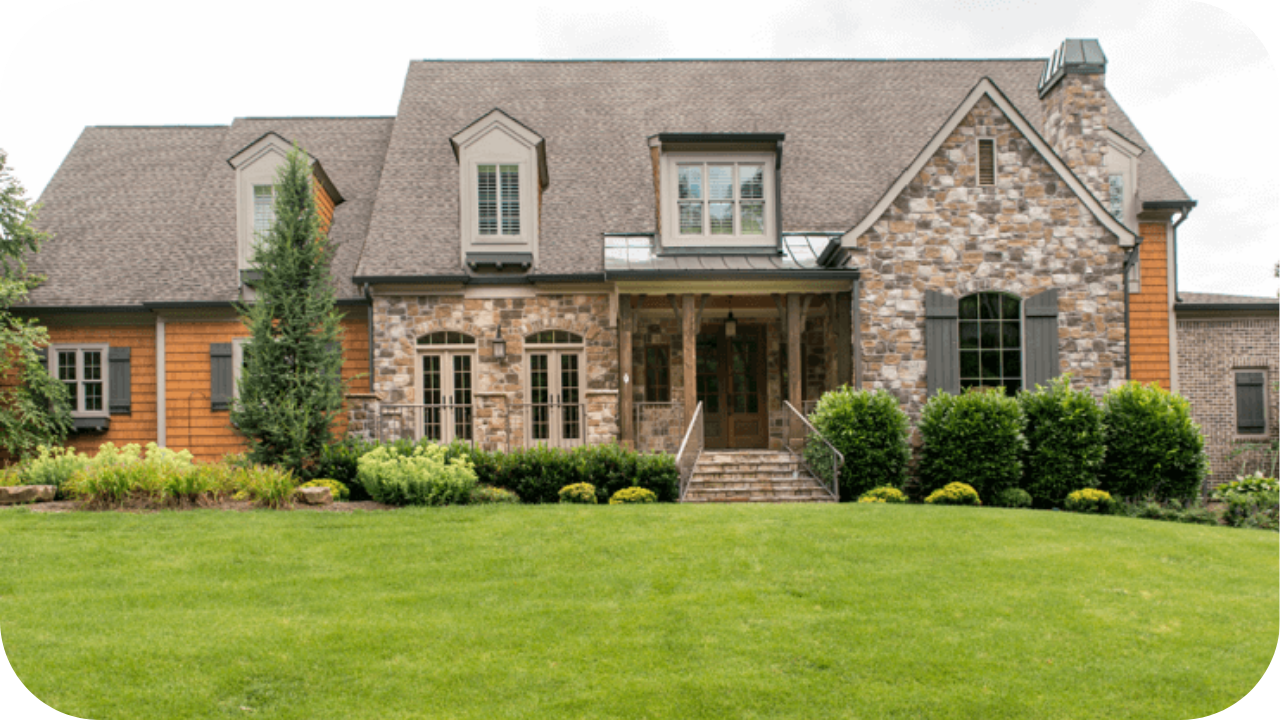
Choosing the right base for your patio pavers can make or break your project. Imagine carefully placing each paver, only to have them shift, crack, or sink after a few months.
The key to a stable and long-lasting patio lies in the foundation you lay beneath it. But which base material is best?
In this article, we’ll reveal the options that provide the perfect support and ensure your pavers stay in place—no matter the weather. Ready to build a patio that lasts? Let’s get started!
Types of Base Materials for Patio Pavers Installation
Choosing the right base for patio pavers is crucial, from ensuring a stable foundation to preventing future shifting. Here’s what you need to know about the best paver base materials.
1. Crushed Stone
Crushed stone is made of angular rock pieces that compact well, offering a stable, solid base. It ensures excellent drainage and compaction, making it ideal for both residential and commercial patios.
This material prevents shifting, maintains a level surface, and provides long-term stability. While more expensive than gravel or sand, its durability makes it perfect for high-traffic areas. Overall, crushed stone is a reliable choice for a strong patio foundation.
2. Gravel
Gravel consists of loose, small stones that provide excellent drainage. It’s a cost-effective base for areas with good natural drainage and light foot traffic. While gravel compacts easily, it needs proper installation to avoid shifting and may require a geotextile membrane for stability.
It allows water to flow freely but can shift without proper compaction, making it less suitable for high-traffic areas or unstable soil conditions.
3. Sand
Sand is used as a bedding layer between pavers and the base, providing a smooth, level surface. It allows for minor adjustments during installation.
However, it’s not suitable as a primary base material, as it can shift or wash away without proper containment. Sand works best with a more stable base like crushed stone or gravel, ensuring proper paver placement and a stable foundation.
4. Limestone Dust or Crusher Run
Limestone dust or crusher run is finely crushed stone mixed with small gravel particles. It compacts tightly, creating a stable, durable base ideal for high-traffic patios. The material ensures good stability and drainage, offering long-lasting support for pavers.
However, it can be dusty and messy during installation, requiring extra care. Despite this, its strength and ability to withstand heavy use make it a top choice for robust installations.
5. Concrete or Mortar
Concrete or mortar, a mix of cement, sand, and water, is used when extra strength is needed, such as in high-traffic areas. It provides a solid, level foundation, ensuring long-term stability for pavers.
Though highly durable, concrete is more expensive and labour-intensive compared to other options. It’s typically reserved for patios that experience heavy loads or require exceptional strength, making it an overkill for lighter projects but ideal for demanding installations.
What Comprises a Paver Base?
A well-constructed paver base consists of three essential layers: the sub-base, the base layer, and the bedding layer. Each layer plays a crucial role in ensuring your patio stays stable, level, and durable.
1. Sub-Base
The sub-base is the foundation of the paver installation. Typically made of crushed stone or gravel, this layer ensures proper drainage and prevents water from pooling beneath the pavers.
It helps to evenly distribute weight evenly, making it ideal for areas with moderate to heavy foot traffic. The sub-base also prevents shifting and settling over time, providing a stable base for the rest of the layers.
2. Base Layer
The base layer sits directly on the sub-base and consists of compacted material, often finer gravel or a mix of sand and crushed stone. This layer helps to level the surface and provides further stability, ensuring the pavers remain firmly in place.
Proper compaction of this layer is key to preventing shifting and settling, creating a solid foundation for the final layer of sand.
3. Bedding Layer
The bedding layer is a thin layer of sharp sand that sits directly beneath the pavers. It helps to level the surface, making fine adjustments easier during installation.
The bedding layer allows the pavers to sit securely while still providing the flexibility to make slight shifts for proper alignment, creating a smooth and stable finish.
How to Prepare the Ground for Patio Paver Installation
Preparing the ground properly is essential for a durable, long-lasting patio. Follow these steps to ensure a solid foundation for your paver installation:
1. Clear the Site
Start by removing any grass, weeds, debris, or old paving materials from the area. This creates a clean, stable surface for the new patio and prevents any unwanted growth that could disrupt your pavers.
2. Excavate the Area
Dig out the area to a depth of 3 to 6 inches, depending on the type and thickness of the pavers you’re using. If the area has poor drainage, you may need to dig deeper to make room for a thicker base layer.
3. Add a Crushed Stone or Gravel Base
Spread a layer of crushed stone or gravel across the excavated area. This will serve as the primary base for your pavers. Use a plate compactor to compact the gravel thoroughly, ensuring a firm and stable foundation that will prevent settling or shifting over time.
4. Install a Bedding Layer of Sand
Once the base is compacted, add a thin layer of sand on top to provide a smooth, level surface for the pavers to rest on. Level the sand with a straightedge to ensure an even surface for the pavers.
5. Ensure Proper Drainage
Create a slight slope (approximately 1–2%) away from any buildings or structures. This will encourage water drainage and prevent puddling or erosion beneath your patio pavers.
Common Mistakes to Avoid During Patio Paver Base Installation
Avoiding common mistakes during your patio paver installation can save you time, money, and frustration. You can ensure a stable, long-lasting patio by following the right steps and being mindful of key details. Here’s what to watch out for:
- Not Preparing the Site Properly: Ensure accurate measurements, correct excavation depth, and proper slope to create a stable foundation. Failing to prepare the site correctly can result in uneven surfaces and shifting pavers in the future.
- Using the Wrong Base Material: Choose the right base material for stability. Opt for crushed stone instead of gravel, as gravel can shift over time, leading to uneven pavers and an unstable foundation.
- Skipping Compaction: Always compact the base material before proceeding with the bedding layer. Skipping this step leads to an unstable base, which can cause your pavers to settle or shift, resulting in costly repairs.
- Neglecting Drainage Considerations: Ensure proper drainage by creating a slight slope away from structures. Failing to do so can cause water pooling under your pavers, leading to erosion, shifting, and damage to the base.
- Not Installing Edging Properly: Ensure proper edging around your patio to secure the pavers in place. Skipping or improperly installing edging can lead to paver shifting over time, as the edges may move and lose their alignment.
Additional Tips for Ensuring a Long-Lasting Patio
To ensure your patio remains beautiful and functional for years to come, it’s essential to follow a few key maintenance practices. These simple steps can help preserve its stability and appearance. Here’s how:
- Apply Joint Sand Between Pavers: Fill the gaps between pavers with joint sand to prevent shifting and weed growth. Paver filling helps keep the pavers locked in place and maintains patio stability.
- Seal Your Patio Pavers: Apply a protective sealant to prevent stains, moisture damage, and weed growth. Sealing keeps pavers looking new and makes cleaning easier.
- Inspect and Maintain Regularly: Check for shifting, uneven pavers, or sand loss. Refill joint sand as needed to maintain stability and prevent weed growth, ensuring your patio stays intact.
- Avoid Heavy Loads: Do not place heavy furniture or equipment directly on the patio pavers. Overloading can cause cracking or shifting, damaging the surface over time.
- Clean Your Pavers: Regularly sweep and wash the surface to prevent dirt buildup and staining. Use a gentle cleaner to maintain the pavers’ appearance without damaging the surface.
- Repair or Replace Damaged Pavers: Inspect pavers regularly for cracks or damage. Small cracks can be repaired with polymeric sand or sealant, but severely damaged pavers should be replaced promptly to prevent further damage and maintain stability.
Conclusion
Ultimately, choosing the right base is key to a long-lasting patio. For the best results, crushed stone (Type 1 Sub-Base) is the ideal material, offering excellent drainage, compaction, and stability. It ensures your pavers stay secure and level, even with heavy foot traffic.
Ready to start your patio project? Contact Splendour in Stone today for expert guidance and premium materials to create a durable, stunning outdoor space that will stand the test of time.
More To Explore

Hamptons-Style Homes and the Right Stone to Match
Hamptons-style homes are synonymous with timeless elegance, offering a perfect blend of coastal charm and sophisticated design. With their light, airy feel and use of

Luxury Looks: Styling Stone in Contemporary Homes
Stone has long been associated with luxury, and in contemporary homes, it brings sophistication and timeless charm. From sleek marble countertops to the warmth of


